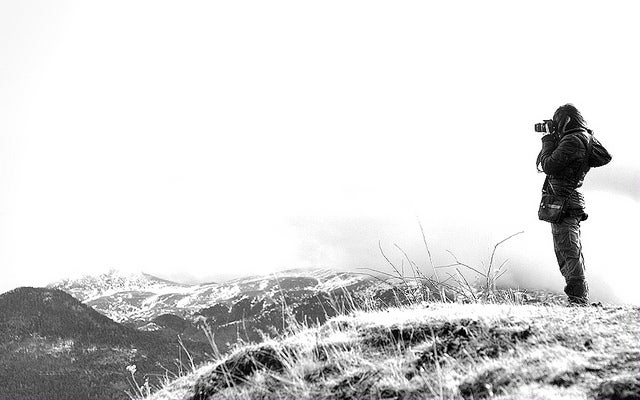 >
>

Ferran Jorda/flickr
Now that the days of shaking Polaroids and winding disposable Kodaks are behind us, taking, sharing, and publishing photographs is easier than ever. Whether you’re an amateur or professional, all it takes is a camera and a computer to make your work available to the world.
The opportunity new technology has provided us is great, but stealing has emerged as a serious threat along with the development of open forums for creative content.
The problem? Even if a photo is sourced directly from your website, someone else could be getting credit or compensation for your work. That means it’s never been more important to properly label and protect your work to ensure you always get the acknowledgment you deserve.
Copyright laws are a veritable legal labyrinth, so it’s crucial that photographers use the correct format in order to properly claim ownership over their work. The first and perhaps most important step is making sure that the copyright symbol (©) is displayed clearly alongside your work.
Although you won’t find a quick shortcut anywhere on your keyboard, most word processors allow you to insert it. A simple copy and paste will also do the trick.
In the end, your own personal copyright disclaimer should look something like this:
All images © 2011-2015 Rohan Shah
Always remember to include the date, copyright symbol, your name, and of course, the material you’re protecting. Make sure to change the year accordingly as time passes, and to include the notice on every page of your site.
Another great way to share your work without worrying about its misappropriation is through the Creative Commons licensing system. Creative Commons describes itelf as an institution that “gives everyone from individual creators to large companies and institutions a simple, standardized way to grant copyright permissions to their creative work.”
This user-friendly licensing platform allows photographers to easily control the level of distribution of their work and employs simple language to keep the system understandable. If you want to maintain control over your images but didn’t study copyright law in college, Creative Commons might be a good option to look into.
No matter how thorough you are when it comes to protecting your work, someone will still undoubtedly find a way to misappropriate it. Luckily, there are ways you can keep tabs on the usage of your images without spending hours scouring the Internet for offenders.
Photographers can insert their image (drag and drop, URL or upload) into websites like Copyscape or Google and the search engine will immediately reveal whether or not your photos are being posted anywhere else on the web. This way, you can keep tabs on your photos and have some time left over to actually take some new ones.
The intricacies of copyright laws can be confusing, especially for the artistic-minded, but with the help of some of the sites and services we discussed, everyone can protect their intellectual property without getting overwhelmed in the process.
For those that care about their work and the context in which it’s presented, Printique offers only a wide variety of high-quality prints, photo books, and framing options, so you can be sure your images will always look their best.